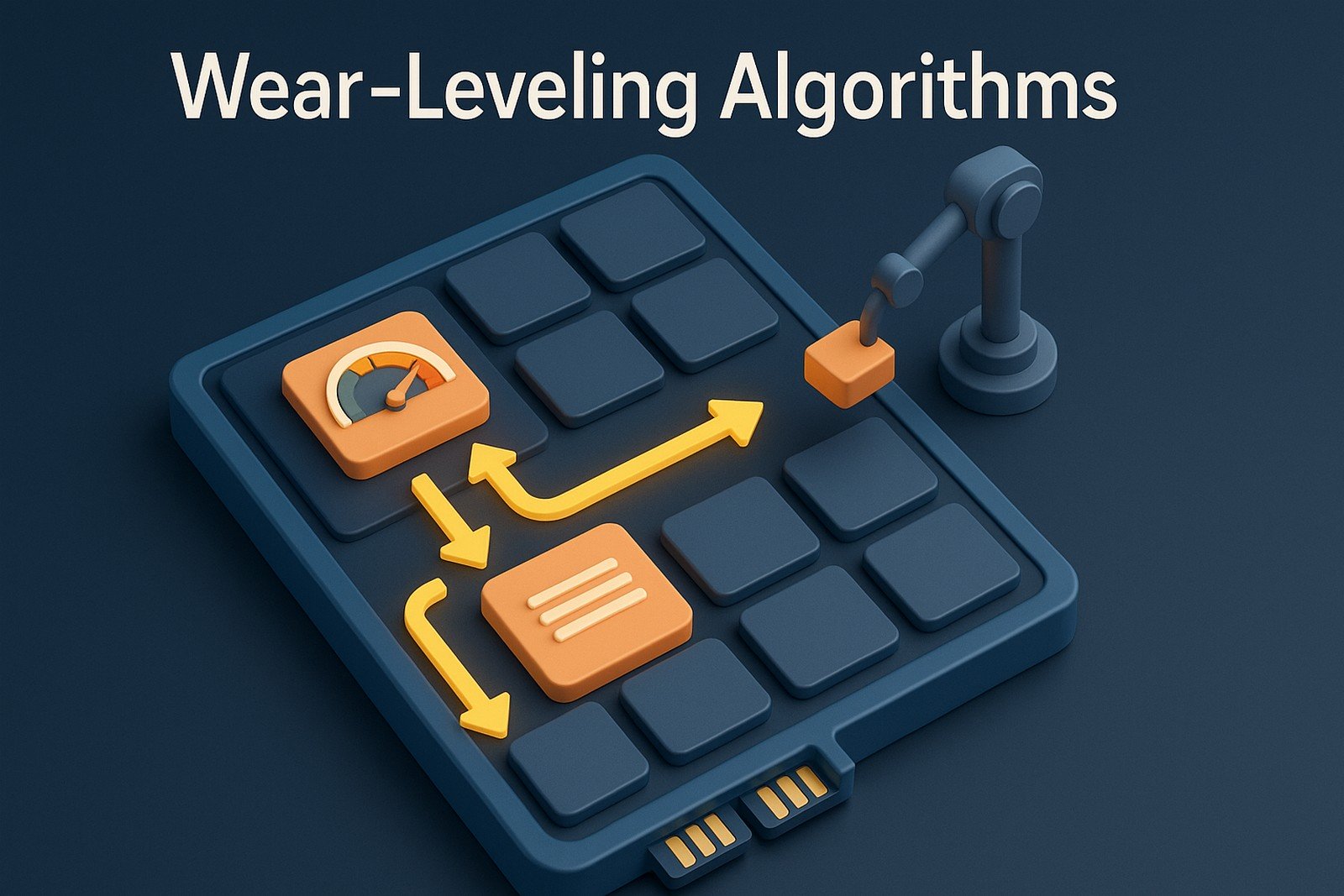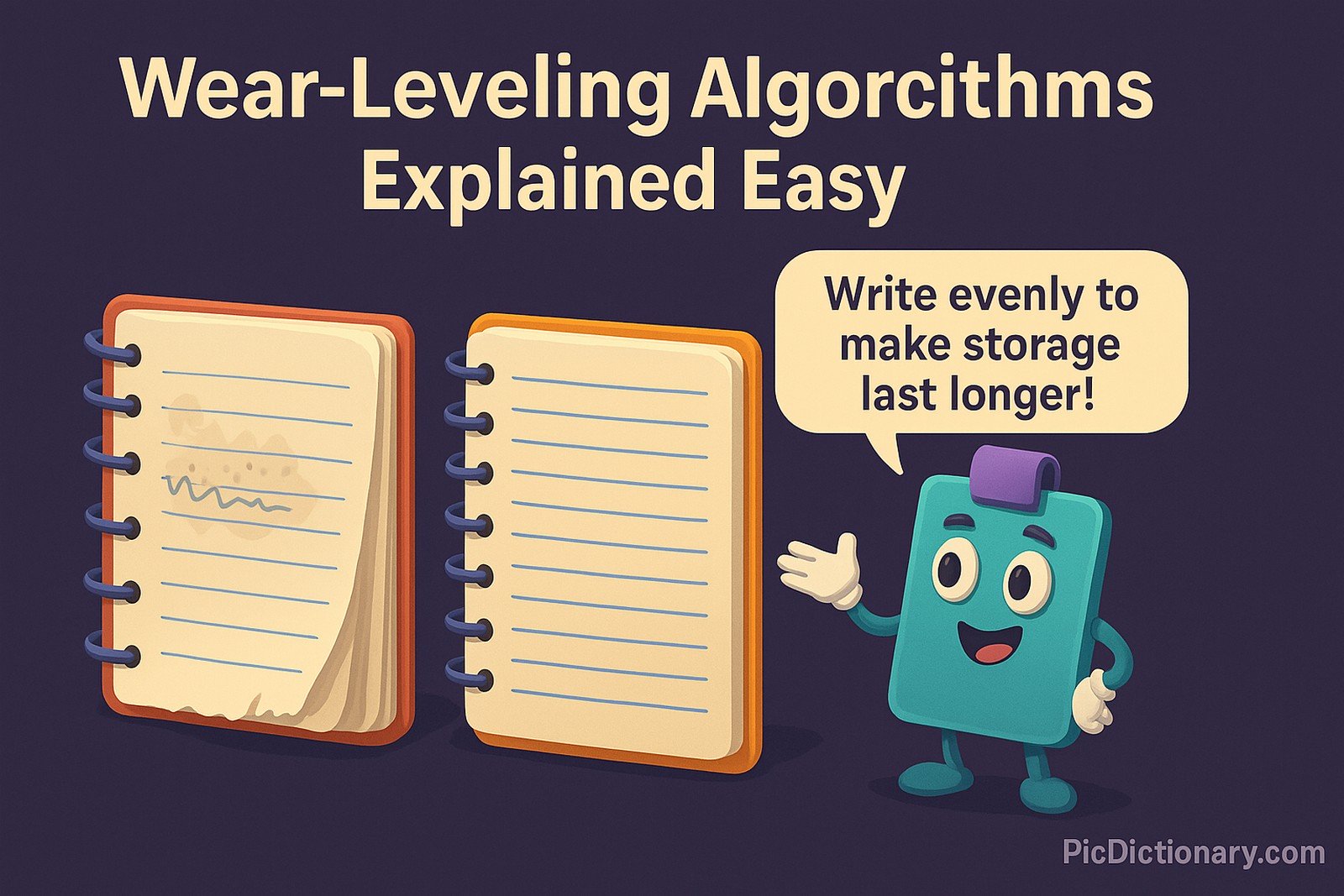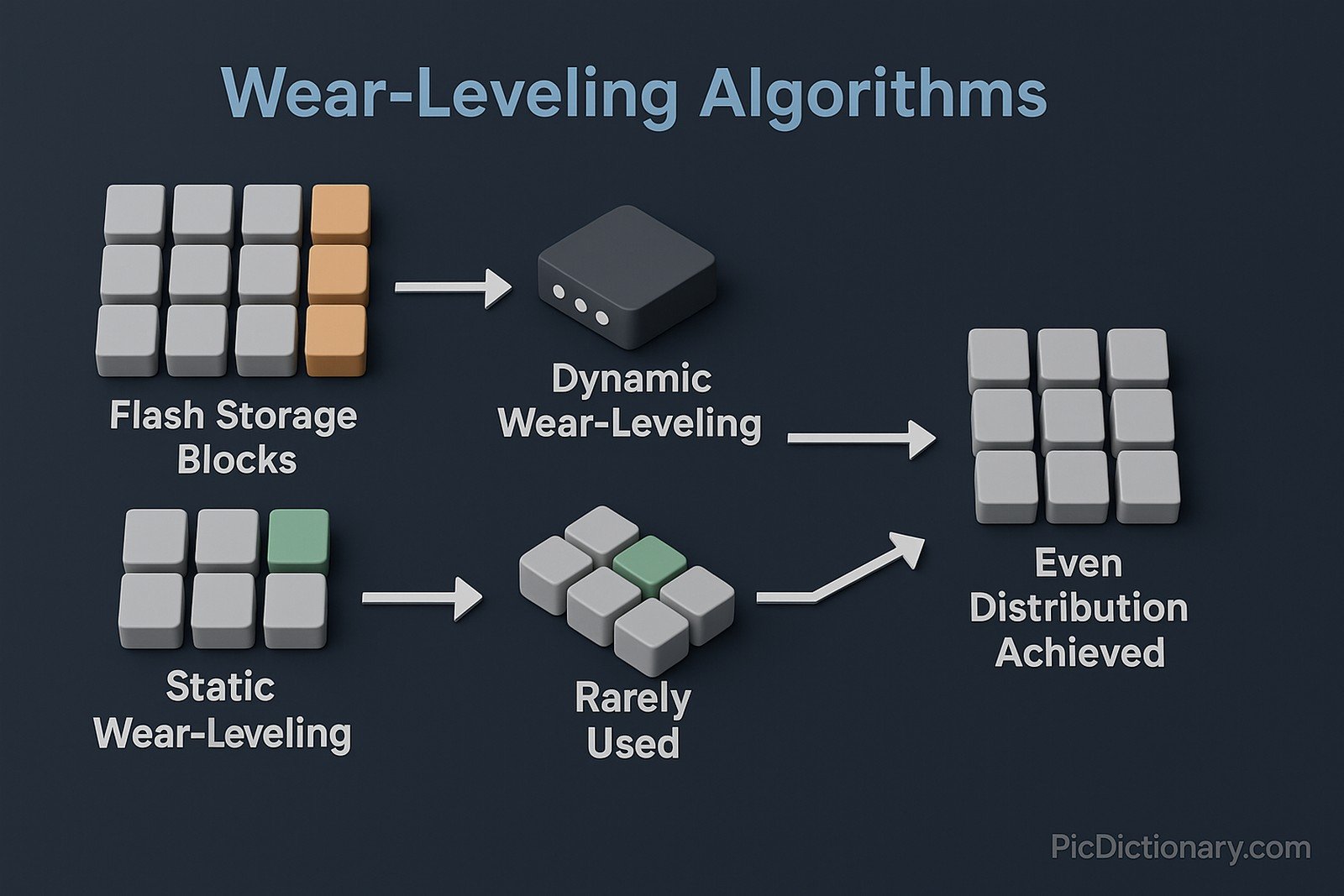Wear-Leveling Algorithms

Quick Navigation:
- Wear-Leveling Algorithms Definition
- Wear-Leveling Algorithms Explained Easy
- Wear-Leveling Algorithms Origin
- Wear-Leveling Algorithms Etymology
- Wear-Leveling Algorithms Usage Trends
- Wear-Leveling Algorithms Usage
- Wear-Leveling Algorithms Examples in Context
- Wear-Leveling Algorithms FAQ
- Wear-Leveling Algorithms Related Words
Wear-Leveling Algorithms Definition
Wear-leveling algorithms are techniques used in solid-state drives (SSDs), flash memory, and other non-volatile storage systems to distribute write and erase cycles evenly across the memory cells. This helps prevent premature failure of certain blocks, extending the lifespan of the storage device. Wear-leveling techniques can be classified into dynamic wear-leveling, which focuses on frequently used blocks, and static wear-leveling, which balances both frequently and infrequently written areas.
Wear-Leveling Algorithms Explained Easy
Imagine you have a notebook where you always write on the first page. Eventually, that page will wear out, while the rest of the notebook remains unused. Wear-leveling algorithms work like a smart organizer that ensures you write on different pages each time, so no single page gets worn out too quickly. This helps your notebook last longer, just like these algorithms help memory storage last longer.
Wear-Leveling Algorithms Origin
The concept of wear-leveling arose in the late 1990s when SSDs and flash-based memory devices started becoming more popular. Early flash memory had a limited number of write and erase cycles per block, leading engineers to develop wear-leveling techniques to extend storage life.
Wear-Leveling Algorithms Etymology
The term “wear-leveling” is derived from the combination of "wear," referring to the degradation of memory cells over time, and "leveling," which represents the process of distributing this wear evenly across all available storage blocks.
Wear-Leveling Algorithms Usage Trends
With the growing adoption of SSDs in consumer and enterprise computing, wear-leveling algorithms have become crucial for maintaining storage reliability. Advances in NAND flash technology have pushed manufacturers to improve wear-leveling techniques, ensuring longer device lifespans even as memory cells shrink in size and endurance decreases.
Wear-Leveling Algorithms Usage
- Formal/Technical Tagging:
- Flash Memory Management
- Solid-State Drive Technology
- NAND Flash Optimization - Typical Collocations:
- "wear-leveling algorithm efficiency"
- "static vs. dynamic wear-leveling"
- "flash memory endurance and wear-leveling"
- "wear-leveling techniques in SSDs"
Wear-Leveling Algorithms Examples in Context
- An SSD controller employs a wear-leveling algorithm to ensure that no single memory block is erased excessively, prolonging the drive’s lifespan.
- In USB flash drives, wear-leveling prevents data corruption by evenly distributing write cycles across the memory cells.
- Enterprise-grade storage devices use advanced wear-leveling strategies to manage high-intensity read/write workloads efficiently.
Wear-Leveling Algorithms FAQ
- What is the purpose of wear-leveling algorithms?
Wear-leveling algorithms distribute write cycles evenly across flash memory blocks to extend device lifespan. - Why do SSDs need wear-leveling?
SSDs have a limited number of write/erase cycles per block, so wear-leveling prevents premature failure of certain memory cells. - What are the different types of wear-leveling?
The two main types are dynamic wear-leveling, which redistributes only frequently modified data, and static wear-leveling, which also moves infrequently modified data. - How do wear-leveling algorithms improve SSD reliability?
By evenly distributing writes, these algorithms reduce excessive wear on specific blocks, preventing early drive failure. - Does wear-leveling affect SSD performance?
While it improves longevity, aggressive wear-leveling can slightly impact write speeds due to data movement overhead. - Can wear-leveling completely prevent SSD wear?
No, but it significantly slows down wear and ensures the drive lasts longer than it would without it. - How do manufacturers implement wear-leveling?
SSD controllers use firmware-based algorithms that track write cycles and redistribute data accordingly. - Are wear-leveling algorithms the same for all flash memory devices?
No, implementations vary based on the type of NAND flash used and the storage device’s workload. - What happens if wear-leveling is not used?
Certain memory blocks will wear out faster, leading to early data corruption and drive failure. - Do HDDs require wear-leveling?
No, traditional hard drives use magnetic storage, which does not suffer from limited write cycles like flash memory.

Wear-Leveling Algorithms Related Words
- Categories/Topics:
- Flash Memory Management
- SSD Optimization
- NAND Flash Wear Reduction
Did you know?
In early SSD models, poor wear-leveling implementation led to noticeable performance degradation and premature drive failure. Modern SSDs now use advanced wear-leveling algorithms combined with error correction and over-provisioning to ensure optimal performance and longevity.
PicDictionary.com is an online dictionary in pictures. If you have questions or suggestions, please reach out to us on WhatsApp or Twitter.Authors | Arjun Vishnu | @ArjunAndVishnu

I am Vishnu. I like AI, Linux, Single Board Computers, and Cloud Computing. I create the web & video content, and I also write for popular websites.
My younger brother, Arjun handles image & video editing. Together, we run a YouTube Channel that's focused on reviewing gadgets and explaining technology.



Comments powered by CComment